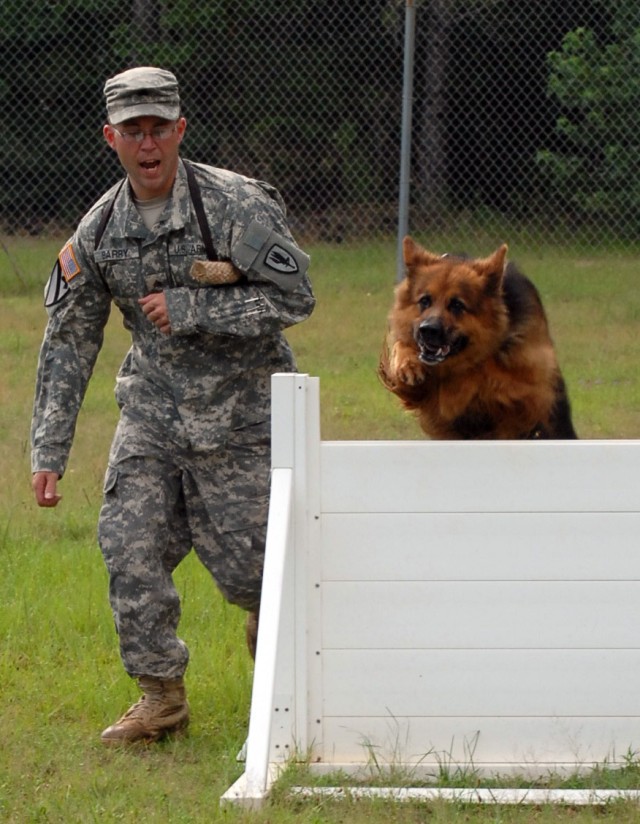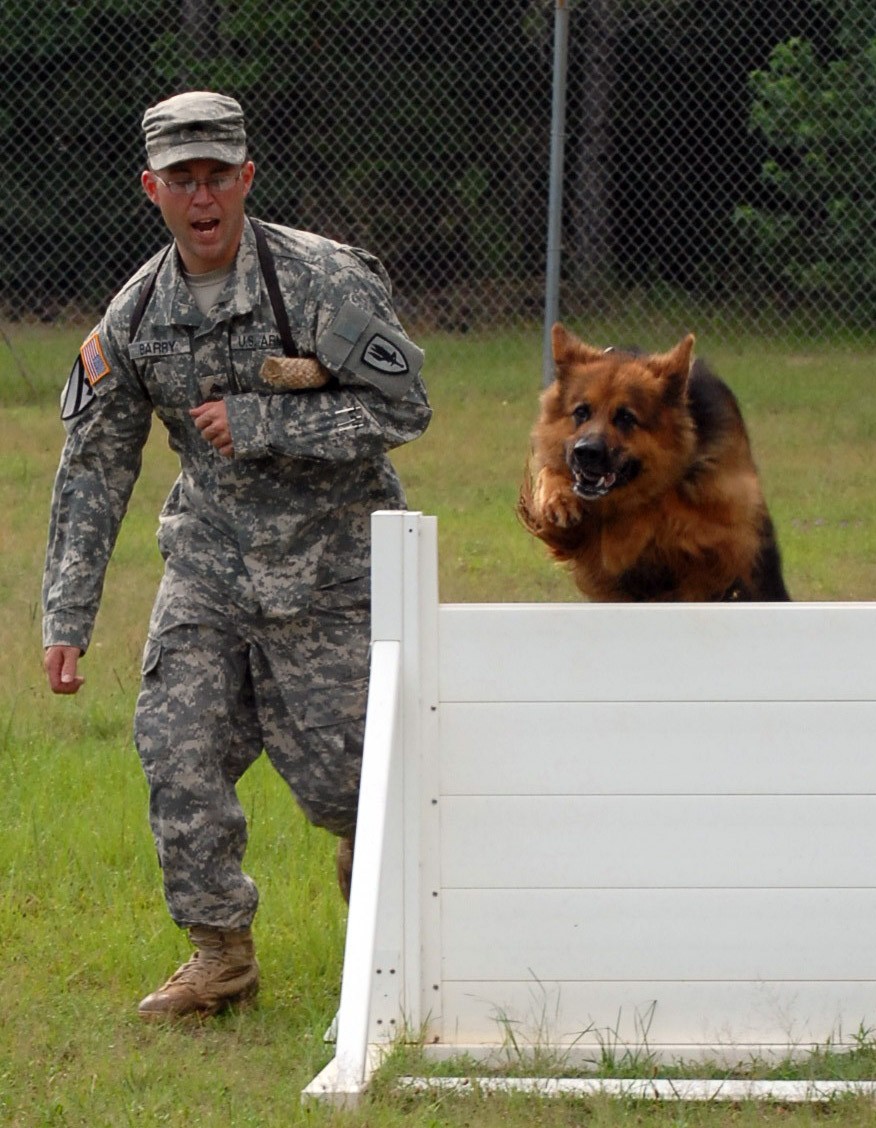FORT RUCKER, Ala. -- The 6th Military Police Detachment is one of the few deployable units within the garrison.
As a deployable unit it accomplishes dual missions in support of the garrison and warfighting efforts.
Military working dog handlers and their partners must obtain and maintain certification for continuous real-world missions.
After a military working dog team attains all of its certifications, it must keep training as well as work 24 hours per week. That work includes force protection, counter narcotics, counter bomb, security presence and patrol.
The teams that support the garrison security mission are called to help with local law enforcement and prepare to deploy downrange. They also perform demonstrations for units, commanders, on- and off-post schools, and community organizations inside and outside Fort Rucker's gates.
"Demonstrations support the deterrence aspect of the law enforcement mission by showing people what we can do," said Sgt 1st Class Timothy Timmins, 6th MP Det. kennel master.
The teams also perform explosives sweeps during VIP visits and assist with explosives and narcotics sweeps in conjunction with local law enforcement.
Soldiers prepare for deployments with a lot of realistic training - many extra hours of step-by-step training with extreme attention to detail, said Sgt. Joe Barry, a military working dog handler who recently returned from Iraq. He is also preparing to become an MWD trainer at Lackland Air Force Base in Texas, where all initial MWD training takes place.
"In Afghanistan, you get a lot of operational experience. We train the way we fight, but until you have the added element of being downrange, it's really different," said Sgt. Stephen Rose, a dog handler who just returned from five months in Afghanistan. "I got to work with a lot of different units. I was exposed to a wide variety of operational experiences depending on the units and their rules of engagement."
MWD teams accept a high level of risk in the downrange environment, and some make the ultimate sacrifice, they said.
Rose was wounded when an improvised explosive device exploded after his military working dog, Bento, alerted on the device. The dog took most of the shrapnel and absorbed most of the blast.
"I like to think Bento saved my life," Rose said. "Right now, I'm just reintegrating into the team and working on getting back into daily life."
Bento touched more than one Soldier at Fort Rucker. Staff Sgt. Quatdreecus Nealon, interim kennel master from July to April, was its original trainer.
"Losing a dog is a hard thing to do. It's like losing one of your Soldiers," Nealon said.
Despite the danger, the varying training schedules and the heartache of losing a partner, none of the Soldiers in the K9 section would have it any other way.
"Bento had such personality, he made it fun to come to work every day," Rose said. "We really have the best job in the Army - we get to play with dogs for a living."
"I miss working with the dogs. To me, training a dog is the single most rewarding experience there is," Nealon said.
"As a K-9 handler downrange, you're the first line of defense on (IEDs)," Rose said. "It comes down to accepting that it's a dangerous job."
Most handlers are proud to be a critical part of the mission of saving Soldiers' lives. Rose recounted one animal in Afghanistan that had six IED finds to its credit.
"Ultimately, all the credit goes to the dog," he said. "It's the dog that finds the explosive device. It's a privilege to be a dog handler and that carries onto the battlefield. If you and your dog can find a trap or bomb, you may have saved someone's life or kept someone from injury."


Social Sharing